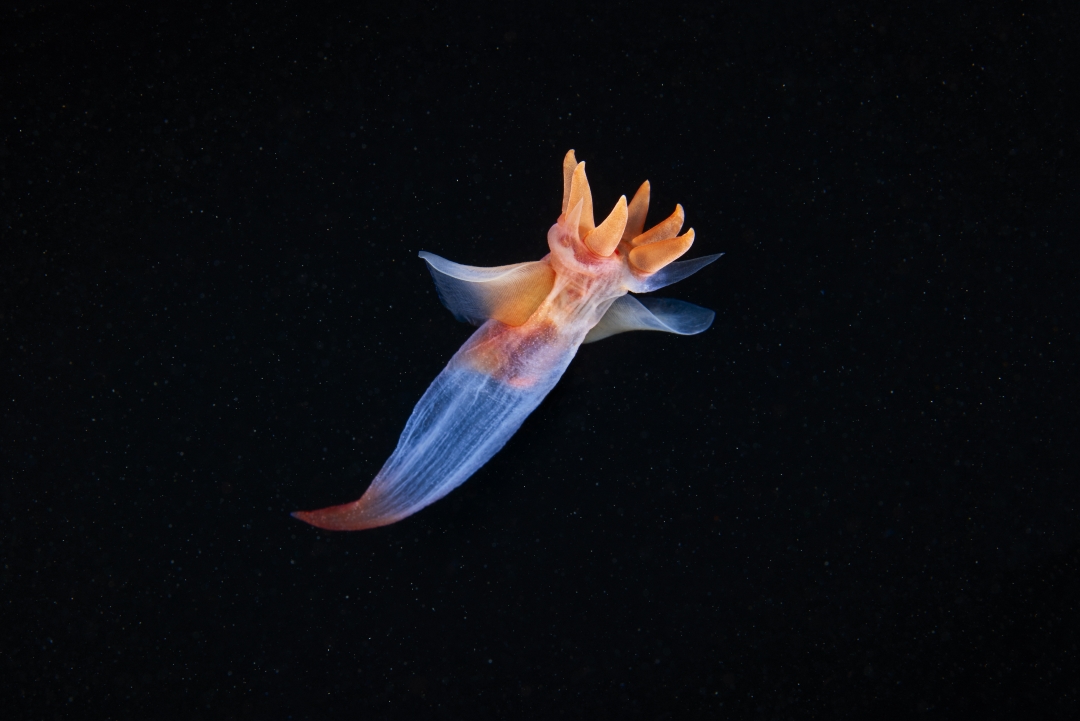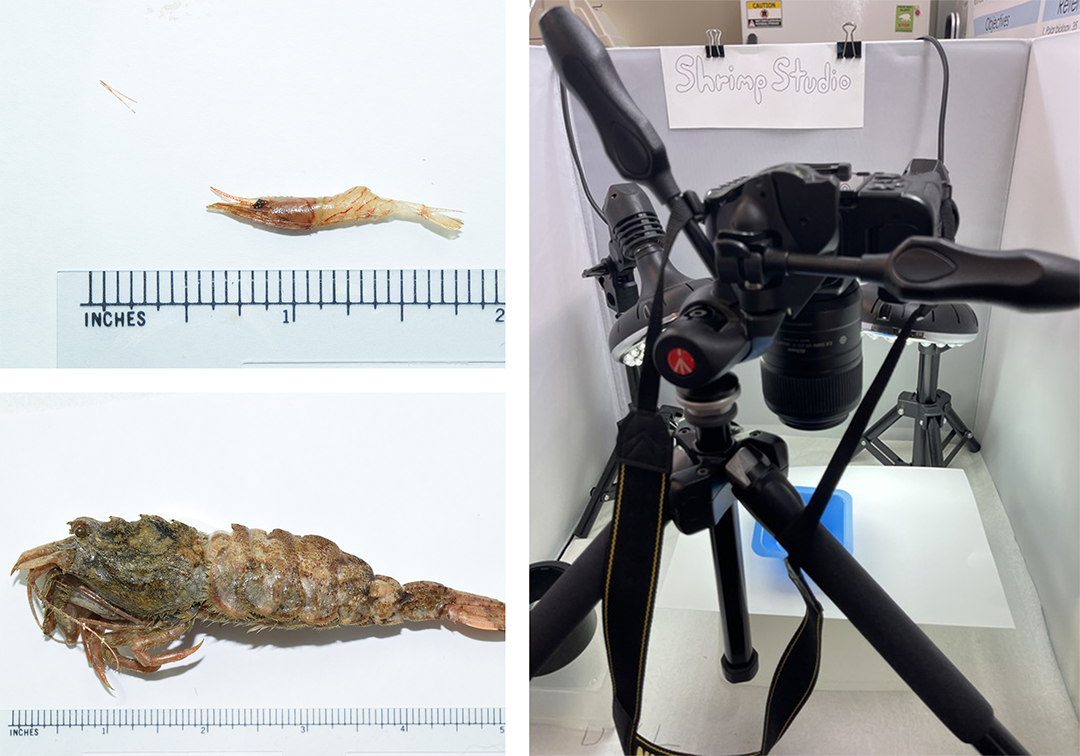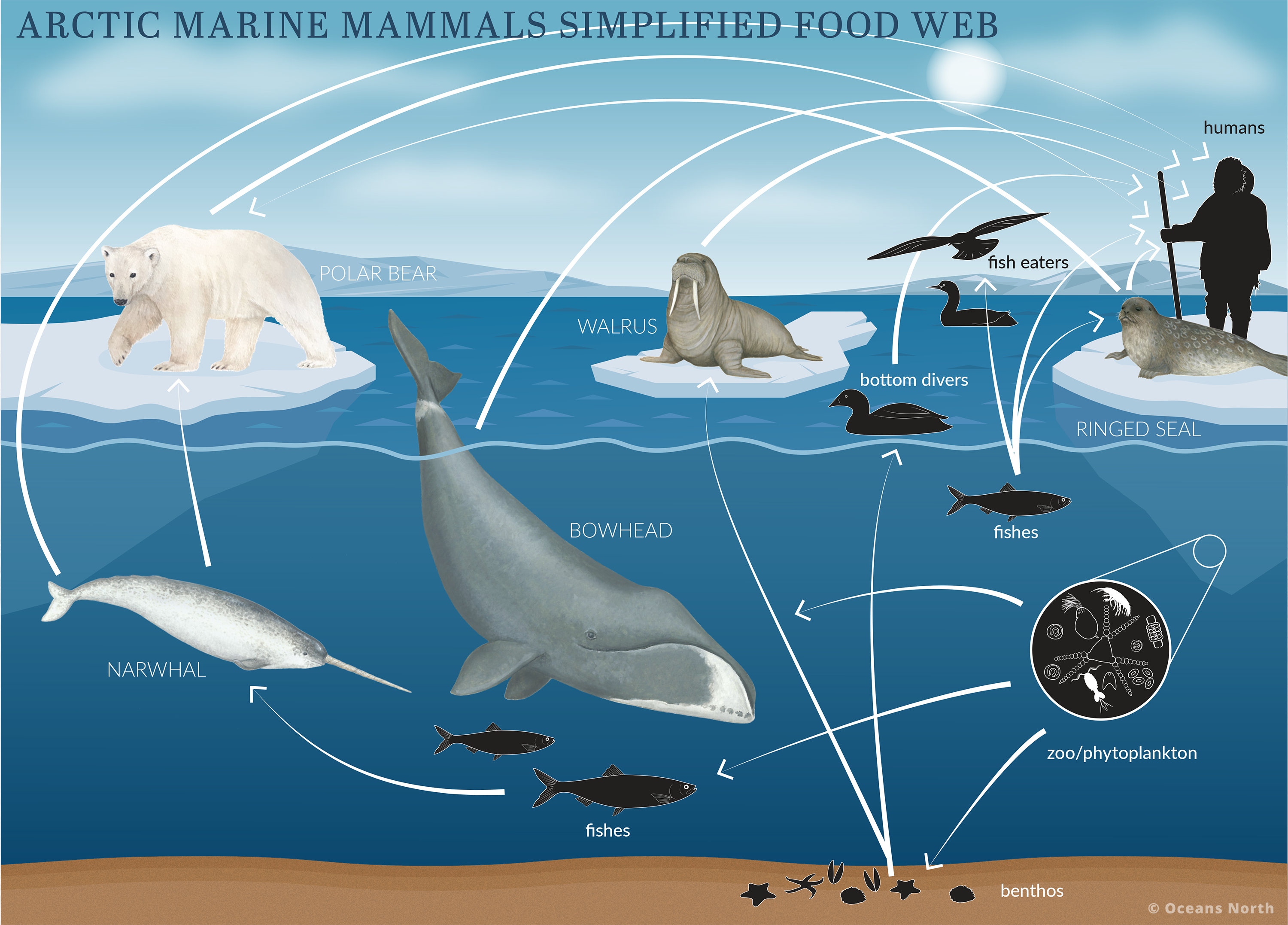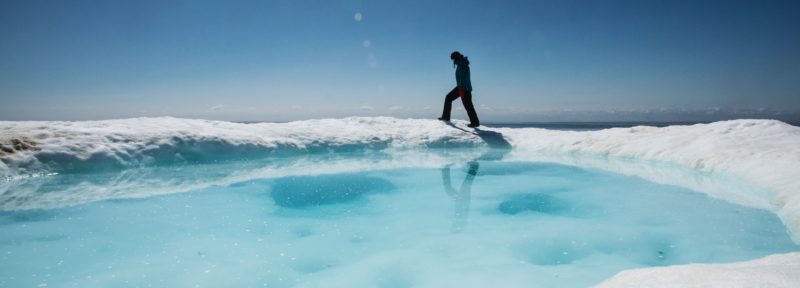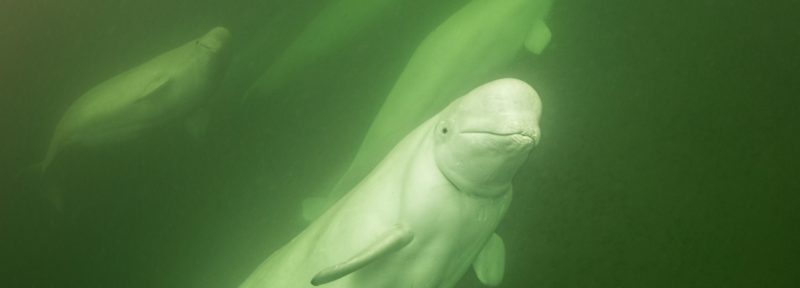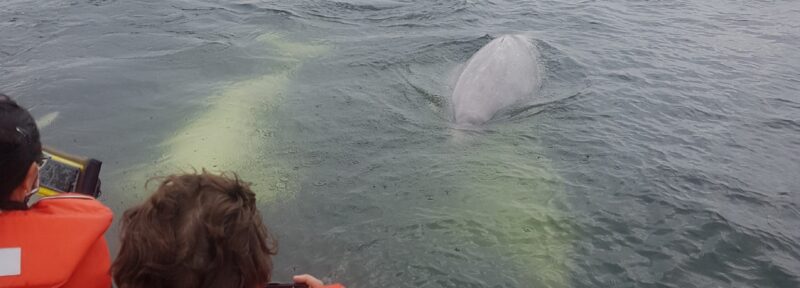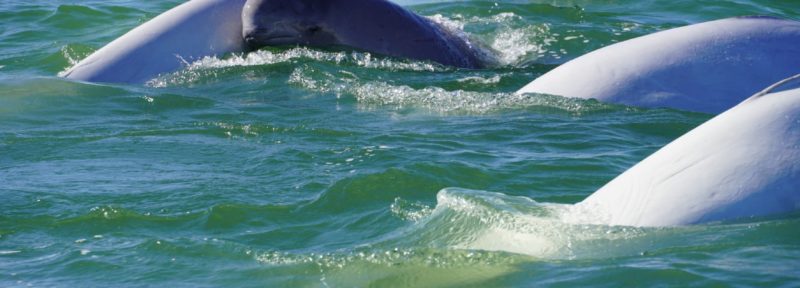Who’s Eating Whom? Untangling the Marine Food Web in Western Hudson Bay
"Sea angels" like the one pictured here are a kind of free-swimming sea slug and play an important role in the marine food web.
Credit: Alexander Semenov
However, if you ask a beluga whale or a sea star in Western Hudson Bay, it’s unlikely to respond in a way you’d understand. So, researchers studying the marine food web there have had to take a more hands-on approach.
Western Hudson Bay is part of the broader Hudson Bay ecosystem, a unique Arctic and subarctic region that is home to a huge variety of marine mammals as well as the world’s largest beluga migration. There are 41 Inuit and First Nations communities around the bay that rely on it for food, travel, and as an important part of their local economies. The region is also particularly vulnerable to the impacts of climate change and industrial development.
Considering its importance and the looming threats to its future health, discussions are underway about what conservation measures should be taken. But before that can happen, a gap must be addressed: scientists don’t know as much as they’d like to about how the Western Hudson Bay ecosystem works.
David Yurkowski is a scientist with the Arctic and Aquatic Research Division of Fisheries and Oceans Canada. “I’m a very curious person, and the great thing about science is that it helps us uncover some of the mysteries of the natural world,” he says. One of those mysteries is how the marine food web of Western Hudson Bay fits together. It’s not just about solving a puzzle, though: “A lot of people rely on the marine resources the system provides,” he explains. And as the climate changes and sea ice dynamics shift, that could affect where species go, what they eat, and how hunters access them.
The estuaries near Churchill, Manitoba are particularly important habitat. Every summer, approximately one-third of the world’s belugas travel to these estuary systems to molt and give birth. In partnership with Oceans North and the Assiniboine Park Conservancy last year, Yurkowski’s team surveyed the waters outside Churchill to better understand the interactions between invertebrates, fish and marine mammals. This was the first time the area had been sampled, and researchers collected over 400 specimens ranging from smartphone-sized shrimp to delicate, winged “sea angels,” a kind of free-swimming sea slug.
Assiniboine Park Conservancy was able to identify nine different shrimp species in the samples, which led to the temporary naming of their laboratory’s photo space as the “Shrimp Studio.”
Credit: Assiniboine Park Conservancy
These are now being further analyzed to build a picture of the marine food web here. The details are complicated, but basically, Yurkowski says that “the saying ‘you are what you eat’ is generally true.” The clues to an animal’s diet build up in its body over time, and researchers have an array of tools they can use to uncover them. One of the most important is stable isotope analysis. Isotopes—atoms with an equal number of protons and an unequal number of neutrons—are found everywhere in the world. Some of these are radioactive, meaning they decay over time. But others are stable and stay the same. It’s these stable isotopes that scientists studying food webs are interested in: they don’t decay and build up in different ratios depending on what we eat. Some forms of fatty acids—molecules that are often acquired through food and not broken down by the body—can also provide information on where a species fits on the food chain and what it has been consuming.
Combined with other techniques like aerial surveys and satellite tracking for larger animals, researchers are getting closer to mapping how the web works together. It’s important to understand the present situation because even once that puzzle is solved, the pieces may keep changing. “Once you have that framework, you can also look at how these links change with the season, or even over the long term,” Yurkowski says. “How might these links change? Which species could thrive, which species might be removed? And which ones could be added in? And how’s that going to influence those connections between the different animals?”
This simplified food web from the Arctic Marine Atlas shows some of the typical feeding relationships between species across the Arctic.
Credit: Oceans North
For Kristin Westdal, Oceans North’s science director, these questions highlight the urgency of both the research and efforts to conserve the region. Westdal has been studying the beluga population in Western Hudson Bay for over a decade, and while the population remains healthy, there’s still so much scientists have yet to learn about them. “We know this is some of the most important beluga habitat in the world, but this is the first time we’ve really looked at what’s found in the waters here,” she says. “Hopefully the results help us understand what measures are needed to ensure these animals continue to thrive and support communities around the bay.”
Alex Tesar is Oceans North’s communications manager.

